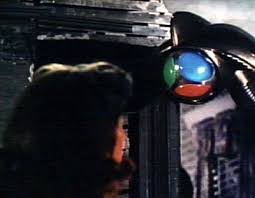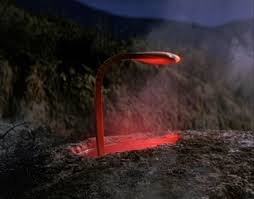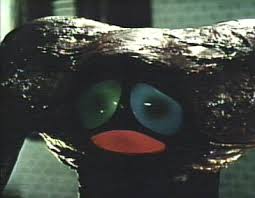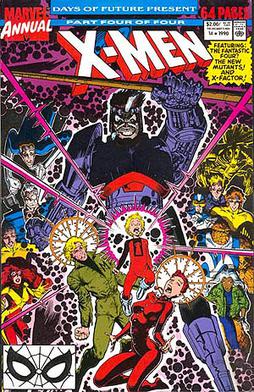Recap & Redoubt
The last SWN game was like an episode of Firefly,action packed with Apex Medical troops baring down on them. The relic ship that they have can only make three more spike jumps before she tears herself apart! They have the cordinates to a distant star system deep in the Talon Empire & the promise of a former Apex facility & little else.
Who knows what mysteries they'll find there?
The Other Megadungeons of Arthur C Clarke
Forget Major Spoilers Because I'm about To Rip These Books Apart
Stop reading now if you don't want the surprises of stories spoiled better yet go out & read the books
My personal copy of the City & The Stars which was a book that my father passed on to me.
The city of
Diaspar is a great model for a mega dungeon for a DM looking for something a bit different in the wasteland of a post apocalytic future or for something encountered in the stars!
Wiki says this about the book's setting & :
Setting
The City and the Stars takes place a billion years in the future, in the city of Diaspar. By this time, the Earth is so old that the oceans have gone and humanity has all but left. As far as the people of Diaspar know, they are the only city left on the planet. The city of Diaspar is completely enclosed. Nobody has come in or left the city for as long as anybody can remember, and everybody in Diaspar has an instinctive insular conservatism. The story behind this fear of venturing outside the city tells of a race of ruthless invaders which beat humanity back from the stars to Earth, and then made a deal that humanity could live - if they never left the planet.
In Diaspar, the entire city is run by the Central Computer. Not only is the city repaired by machines, but the people themselves are created by the machines as well. The computer creates bodies for the people of Diaspar to live in and stores their minds in its memory at the end of their lives. At any time, only a small number of these people are actually living in Diaspar, the rest are retained in the computer's memory banks.
All the currently existent people of Diaspar have had past "lives" within Diaspar except one person — Alvin, the main character of this story. He is a 'Unique', different from everybody else in Diaspar, not only because he does not have any past lives to remember, but because instead of fearing the outside, he feels compelled to leave. Alvin has just come to the age where he is considered grown up, and is putting all his energies into trying to find a way out. Eventually, a character called Khedron the Jester helps Alvin use the central computer to find a way out of the city of Diaspar. This involves the discovery that in the remote past, Diaspar was linked to other cities by an underground transport system. This system still exists although its terminal was covered over and sealed with only a secret entrance left.
Alvin's quest
Once out of Diaspar, Alvin finds that one other human habitation remains on Earth. In contrast to technological Diaspar, Lys is a vast green oasis shielded by mountains from the worldwide desert. Its people are not stored and recreated technologically, but naturally conceive, born, age, and die. They have rejected the hyper-advanced technology of Diaspar in favor of an almost agrarian existence, with machines used only for labor-saving purposes. The people of Lys have instead worked to perfect the arts of the mind; they are telepaths, capable of communicating with each other over great distances and without words.
Alvin continues his quest until he finds out the truth of why the people of Diaspar are so frightened of the external universe and why Lys is so scared of space travel and mechanical things. In Lys he goes on a trip with a young man named Hilvar who becomes his friend, and they see a signal light, which they decide to investigate. It leads them to Shalmirane, the remains of the fortress where the Invaders were fought off with unimaginable weapons, and there they encounter an extraterrestrial creature with a strange robot. The creature is the last survivor of a religious cult dating back to the days of the Galactic Empire. The robot was the companion of the founder, the "Master", who came with his followers to Earth at the end of his life. Alvin and Hilvar are unable to understand the content of the religion except that it refers to "Great Ones" who have left, but will someday return. Alvin persuades the creature to lend him the robot, arguing that the Master would want it to see how things were developing in the world. The Master had, however, forbidden the robot to give out any information at all, so Alvin does not learn anything.
The robot enables Alvin to escape the attempts of the people of Lys to purge his mind and send him back—the previous 14 Uniques had stayed. Alvin had originally been told he would be free to choose whether to stay or return, but because the people of Lys had failed to prevent news of his departure spreading in Diaspar in time, this option was no longer available. Back in Diaspar he seeks the help of the Central Computer, which overcomes the Master's block on the robot by producing an illusion of an apocalyptic return of the Great Ones.
[edit]Discoveries
Alvin now learns that the Master's ship is still functional, buried outside Diaspar. He manages to retrieve it, fetches Hilvar from Lys, and travels into deep space. They encounter Vanamonde, a being of pure intellect, with whom Hilvar, being telepathic like other Lys people, can communicate and bring him back to Earth. From him the truth of history finally emerges.
The fearsome Invaders, it turns out, were a myth: Shalmirane was actually used to destroy the Moon when this became necessary to prevent it from colliding with the Earth. Instead, the people of Diaspar and Lys are the descendants of those humans who deliberately turned away from the universe in rejection of history's greatest scientific project: the creation of a disembodied intellect. The first attempt had created a powerful but insane being, the Mad Mind. The Mad Mind had devastated the galaxy and its civilizations before being imprisoned in a "strange artificial star" called the Black Sun.
Vanamonde is the second, successful experiment of the ancient empire: a being of pure intellect, immensely old, immensely powerful, able to move instantly to any point in space — but entirely childlike and unsophisticated. Vanamonde's ultimate destiny, Hilvar realizes, is to battle the Mad Mind, when it escapes its prison at the end of Time.
After this, most of the Galactic Empire had left our galaxy, leaving only a scattered few. This departure from the galaxy, leaving it to Vanamonde, was because contact had been made with something "very strange and very great" which called them urgently.
Alvin's discoveries reunite Diaspar with Lys. He then sends the ship, under the command of the robot, to search for the long-lost people of the Empire. He does not wish to search himself - even if there are human remnants in the Galaxy, they are probably decadent - and he has work to do on Earth. Even the environment, he hopes, can be revived
The City & The Stars As Fodder For SWN
The book basically has everything a DM needs to create an entire campaign from scratch! Telepathic races, cosmic psionic entities, Diaspar is like something out of Logan's Run, vast sprialing technology, weird religions, vast technological creations & elements that seem right out of a movie or comic book!
Elements against a background that's as boring as hell!
The fact is that while classic science fiction is great its pretty much in stark contrast to the average OD&D & that's simply because their two different genres aimed the same style of audience
All that simply needs to be done is to take the elements of OD&D or a game such as Stars With Numbers & combined them.
There are two books the earlier Against the Fall of Night as well as The City & The Stars. Basically Clarke took a book he wasn't happy with revamped it & then thought it would replace the earlier version. Like remakes of movies today you sometimes can't replace the classics.
Wiki has this to say about the contrasts between the books :
" Against the Fall of Night opens with a fragment, apparently originally written in isolation in 1935, in which all Diaspar has fallen silent and Alvin is called out by his father to see something in the sky. Alvin's father says he has only ever seen one other. It is a cloud. This scene dramatises the "desert at the end of time" setting, but is not quite consistent with the detail that we are later told that Rorden had never seen the stars until Alvin shows him the outside.
In Against the Fall of Night Alvin is the only child to be born in Diaspar for seven thousand years, and the people of Diaspar are described as immortal, but their lives appear to be simply extremely extended—the point is not very clear. In The City and the Stars the people of Diaspar live an endless sequence of limited lives, being reissued bodies from the Hall of Creation and between lives spending long ages frozen in the Memory Banks. In both, Lys's rejection of "the false dream" of immortality is key to its break with Diaspar. In The City and the Stars Alvin is a "Unique", a person who, anomalously, has apparently never lived before. Only a handful of previous cases are known.
In Against the Fall of Night Alvin is assisted in his search to leave Diaspar by Rorden, the Keeper of the Records. In The City and the Stars Rorden is replaced by Khedron the Jester, whose duty it is in Diaspar to introduce calculated amounts of disorder from time to time and consequently has access to unusual places. But Alvin's success is really made possible by the tacit consent of the Central Computer. This had no real equivalent in Against the Fall of Night, showing the new possibilities created by computers in the post-war years. In the earlier novel, there are master robots, but they are multiple and do not seem to have the active supervisory role of the Central Computer. The Central Computer is not a single machine but the primary sentient Artificial Intelligence that oversees all the computing power in Diaspar. The Central Computer in Against the Fall of Night is merely a functioning computer demonstrating no self-awareness whatsoever. In The City and the Stars it talks and has a definite personality.
There are a few differences in the plot concerning the robot. In the earlier novel, the Master's follower was human, and he had three robots, of which one was lent to Alvin, whereas in the later novel the follower is extraterrestrial and has only the one robot. As was noted above, in The City and the Stars the block in the robot is overcome by an illusion of the apocalypse. In Against the Fall of Night a duplicate of the robot is created which is identical except for the block.
In The City and the Stars, there is somewhat more circumstantial detail about the life of Diaspar. For example, there are "sagas", total-immersion virtual reality entertainments where you apparently lose your outside knowledge. Alvin has a female lover, Alystra, whom he abandons (sex and even a degree of romantic love continue in Diaspar although unconnected with reproduction or family life). When citizens re-emerge from the Hall of Creation they are assigned "parents" who look after their social education, and a tutor. Though new citizens emerge as physically formed adults they do not remember their past lives until about the age of twenty, and apparently it is not mentioned to them until they have a sort of "facts of life" talk. At any rate it was not mentioned to Alvin. Little of this appears in Against the Fall of Night.
In Against the Fall of Night, Alvin is apparently a literal child, the first for 7,000 years. There is no explanation of whether this interval is normal or whether children are expected at all.
In The City and the Stars, the city of Diaspar was apparently planned as a closed community, and its true past deliberately obliterated. The Uniques, it seems, were a device added by the original planners, who thought that a safety device should be left, to test periodically for what lay outside the city. This makes the role of Alvin somewhat less independent: whereas in Against the Fall of Night he was an adventurer, albeit "the first to be lucky", in The City and the Stars it seems at the end that he may have been a pawn. The escape route from Diaspar involves the "Tomb of Yarlan Zey" in both books; in The City and the Stars Yarlan Zey was apparently a leading figure in the planners of Diaspar, but may also have been one of those secretly planting the Uniques.
At the end, when leaders from Diaspar travel to Lys, in Against the Fall of Night they are apparently able simply to master their fears, whereas in The City and the Stars powerful psychology is necessary, and Alvin's tutor Jeserac experiences a "saga" in which Yarlan Zey explains how Diaspar was founded and releases him from his fears.
There is a slight difference in the way the two books treat the "Master" and the "Great Ones". In Against the Fall of Night it is eventually revealed that the Great Ones were the people of the Empire who had left the galaxy. The Master is presented as a wise man, a philosopher, whose teaching was misunderstood and made a religion by superstitious followers. In The City and the Stars, however, he is a religious leader who uses trickery to advance his goals; the block on the robot was imposed in order to keep his secrets safe (although he did teach much that was wise and noble). In the later novel the "Great Ones" are not identified at the end of the novel as they are in the earlier version.
In general, in Against the Fall of Night the false history and the dystopic society seem to have grown up more organically; whereas in The City and the Stars they seem to have been more deliberate creations. While it is unproblematic for Diaspar, it is less clear why Lys should then have the same doctored history."
The creations of Diaspar & co seem tailor made to take a group of PCs to the edge of the universe & beyond! Telepathic races, vat grown humanity, weird religions, cosmic psionic entities. Yeah its all there & its going to be used tonight! I've read both of these books over the last two days & what's struck me is how much Star Trek the original series borrowed from classic science fiction. Along with the Matrix saga there is so much that comes through this that Clarke must find it ironic in his grave at this point.
Weirdly enough I believe that both novels can be used as perfect blue prints for presenting mega dungeons. Bits & pieces left behind in time & space scattered over the multiverse all the way to the end of time. The technology is on par with what was presented in SWN & the two novels are easily translated over.
The Nightlands Connection
"Here was the end of an evolution almost as long as Man's. Its beginnings were lost in the mists of the Dawn Ages, when humanity had first learned the use of power and sent its noisy engines clanking about the world. Steam, water, wind-all had been harnessed for a little while and then abandoned. For centuries the energy of matter had run the world until it too had been superseded, and with each change the old machines were forgotten and new ones took their place. Very slowly, over thousands of years, the ideal of the perfect machine was approached-that ideal which had once been a dream, then a distant prospect, and at last reality: No machine may contain any moving parts. Here was the ultimate expression of that ideal. Its achievement had taken Man perhaps a hundred million years, and in the moment of his triumph he had turned his back upon the machine forever. It had reached finality, and thenceforth could sustain itself eternally while serving him."
Ironically I've found two connections with these novels to two earlier novels that may allow me to connect together two. The Night lands by William Hope Hodgeson & HG Wells Time Machine both seem to underpin parts of these novels. The ideals of the stories all point to possible variations on the destiny of mankind & how we define it. They could well be other timelines where things have gone terribly,terribly wrong. The weird technology the pyramids, the strange religions, the psionics its all there. Perhaps the Great Old Ones crashed the party & things went to seed from there.
So basically using a basically a bibliography that would fit this sort of campaign would look something like this to me :
- The Nightland William Hope Hodgeson
- The City & The Stars & Against The Fall of Night Arthur C. Clarke
- The Shadow Out Of Time HP Lovecraft
- Last & First Men Olaf Stapledon
- The Alien franchise, Prometheus, Blade Runner Firefly, etc
- Classic Science Fiction & 50s films
- Edgar Rice Burroughs Material
- 60s & 70s style exploitation science fiction or fantasy
Yeah, yeah Greg Bear covered all this but frankly I don't have access to Mr. Bear's work at the moment There are also Morelock, Slumped men, & various other examples of the worst of humanity's future evolution awaiting them!
The Cylinder In The Night
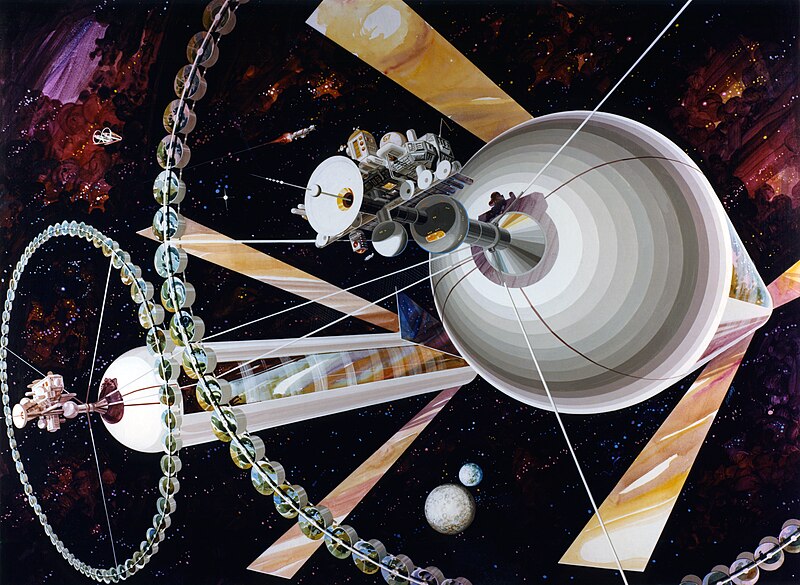
The cylinders are are the creations of mankind from beyond the pales of time itself. They have been abandon for a very, very, long time. Apex Medical found them & along with Geofront Inc. have been exploiting the technology found within them. They travel on an unknown course between the stars "Flying Dutchmen" style. Now the characters are on their way to them!
Random " Alien" City Finds 1d10 From Within the Cylinder
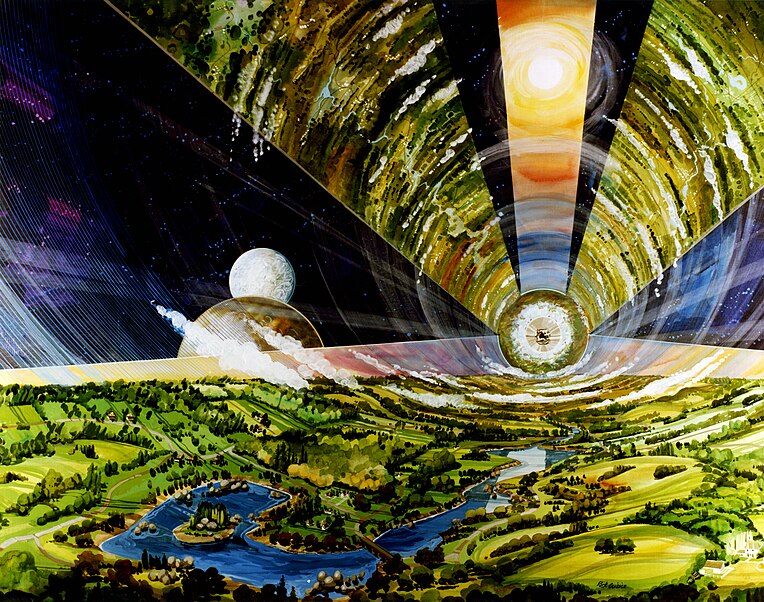
- A pile of metallic rubbish that reassembles itself into an alien tool kit 1d4 items of unknown use
- 1d4 random credits covered in melted gold
- An alien knife covered in copper based blood & a piece of red cloth from a shirt
- A breathing apperatus with an alien throat fossilized to it
- A brand new med kit & tricorder fully charged & still on
- A M1A1 pulse rifle magazine spent & empty
- A shock prod with a fully charged capacitor
- Broken mono blade sword with a spent energy clip
- Power binders with key looped through on wire
- Alien head with explosive collar still attached
For even more information about The City & The Stars go right Here


